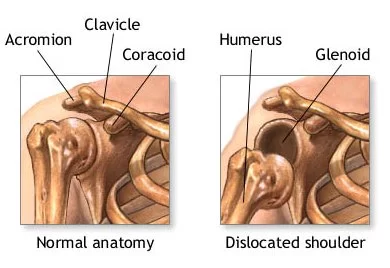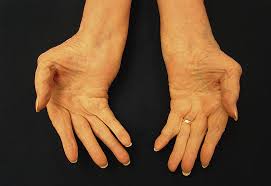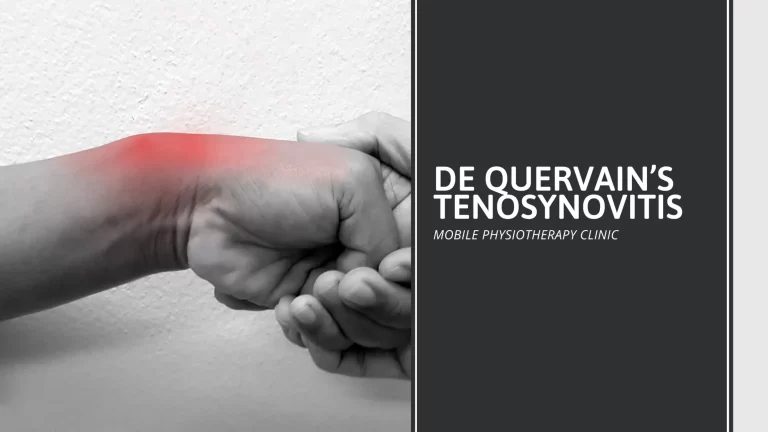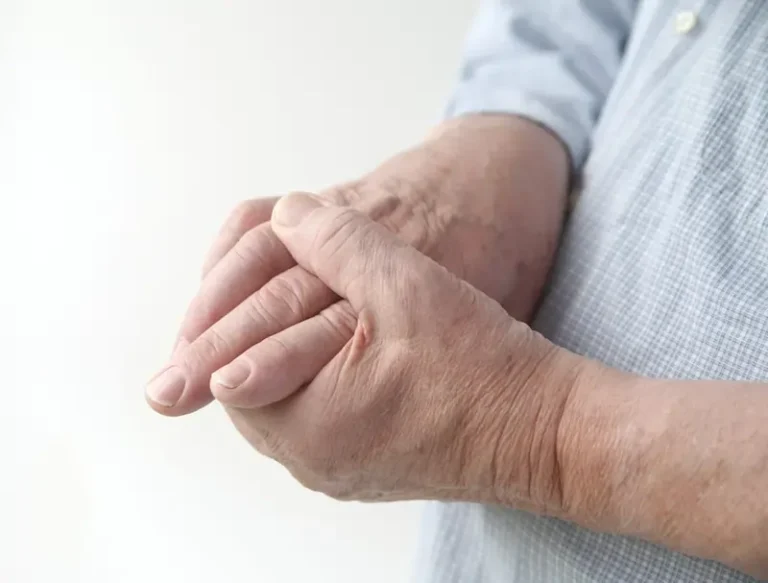ACL Injury: Grade, Symptoms, Diagnosis, Treatment
An ACL injury or tear is damage to the anterior cruciate ligament (ACL), located at the center of your knee. The tear may be partial (the ligament is torn a little) or total (the ligament is torn into two pieces). It will hurt if you tear your ACL. Your knee may “give out” (collapse or buckle) and you may hear or feel a pop. Typically, your knee will immediately start to swell up.
“Ligament” is what the medical world calls the tough bands of tissue that connect bones or hold organs in place. The word “anterior” means “towards the front of the body.” Cruciate means “cross-shaped,” and in medical terms it refers to the two ligaments in your knee that form the shape of a cross: the ACL in the front and the posterior cruciate ligament (PCL) in the back.
Your knees are made up of bones, ligaments, tendons and cartilage. The anterior cruciate ligament (ACL), which is located in the front center of your knee, connects the thigh bone (femur) to the shin bone (tibia). It is one of four primary ligaments located in your knee:
- Anterior cruciate ligament (ACL)
- Medial collateral ligament (MCL)
- Lateral collateral ligament (LCL)
- Posterior cruciate ligament (PCL)
The main function of the ACL is to stop forward movement and rotation of the shin bone on the thigh bone.
Table of Contents
Grades of ACL Injury
When you hurt a ligament, your doctor may grade the injury on a one to three scale, with three being the most severe:
- Grade One: Your ligament has been stretched, but it still does its job of stabilizing the knee joint
- Grade Two: Your ligament has been stretched and loosened. It’s partially torn (This grade is rare)
- Grade Three: Your ligament is torn – divided into two pieces. This is a very severe injury
ACL tears are often accompanied by injuries to the collateral ligaments, joint capsule, articular cartilage or the menisci (cartilage pads).
Symptoms of ACL Injury
Many people hear a popping noise in their knee when they get hurt. But it doesn’t happen to everyone. More common symptoms include:
- Pain: If you have a minor injury, you may not feel pain. You may feel sore along your knee’s joint line. Some people have trouble standing or putting pressure on the hurt leg
- Swelling: This is most likely to happen during the first 24 hours. You can reduce swelling by putting ice on your knee and elevating (raising) your leg by propping it up on a pillow
- Trouble walking: If you’re able to put pressure on your hurt leg, you may notice that it’s harder than normal to walk. Some people find that the knee joint feels looser than it should
Less range of motion: After you damage your ACL, it’s very likely that you won’t be able to bend and flex your knee like you normally would
Causes of ACL Injury
Ligaments are strong bands of tissue that connect one bone to another. The ACL, one of two ligaments that cross in the middle of the knee, connects your thigh bone to your shinbone and helps stabilize your knee joint.
ACL injuries often happen during sports and fitness activities that can put stress on the knee:
- Suddenly slowing down and changing direction (cutting)
- Pivoting with your foot firmly planted
- Landing awkwardly from a jump
- Stopping suddenly
- Receiving a direct blow to the knee or having a collision, such as a football tackle
When the ligament is damaged, there is usually a partial or complete tear of the tissue. A mild injury may stretch the ligament but leave it intact.
Risk Factors of ACL Injury
ACL tears typically occur in highly active people. Certain movements tend to cause ACL injuries:
- landing flat-footed from a jump
- overextending your knee joint
- changing direction fast
- changing speed while running
You can also injure your ACL if the side of your knee is hit. This might happen in a car accident or a football tackle.
ACL tears are typical sports injuries. Basketball, skiing, football, and soccer are a few of the sports that make athletes vulnerable to knee injuries, because these activities involve jumping or pivoting. According to the American Academy of Orthopedic Surgeons, ACL injuries are 2 to 10 times more likely to occur in female athletes than in male athletes.
Preventions of ACL Injury
Proper training and exercise can help reduce the risk of ACL injury. A sports medicine physician, physical therapist, athletic trainer or other specialist in sports medicine can provide assessment, instruction and feedback that can help you reduce risks.
Programs to reduce ACL injury include:
- Exercises to strengthen the core — including the hips, pelvis and lower abdomen — with a goal of training athletes to avoid moving the knee inward during a squat
- Exercises that strengthen leg muscles, particularly hamstring exercises, to ensure an overall balance in leg muscle strength
- Training and exercise emphasizing proper technique and knee position when jumping and landing from jumps
- Do it to improve technique when performing pivoting and cutting movements
Training to strengthen muscles of the legs, hips and core — as well as training to improve jumping and landing techniques and to prevent inward movement of the knee — may help to reduce the higher ACL injury risk in female athletes.
Diagnosis of ACL Injury
Your doctor will want to hear exactly how you injured your knee. They’ll look at both knees to see if the sore one looks different. They may also order any of the following:
Tests: Your doctor may ask you to lie on your back and bend your hips and/or your knees at certain angles. They’ll then place their hands on different parts of your leg and gently shift you around. If any of your bones move in a way that isn’t normal, that could be a sign that your ACL is damaged.
X-ray: Soft tissues like the ACL don’t appear on X-rays, but your doctor may want to rule out broken bones.
MRI or ultrasound: These exams can show both soft tissue and bone. If you have a damaged ACL, it should appear on the images.
Arthroscopy: This literally means to “look within the joint.” During the exam, an orthopedic surgeon makes a small cut in your skin. They insert a pencil-sized tool that contains a lighting system and lens (arthroscope) into the joint. The camera projects an image of the joint onto a TV screen. Your doctor can see what type of injury you have and repair or correct it, if needed.
Complications of ACL Injury
- Infection: Infection is rare, but still a risk with any type of surgery
- Stiffness: Stiffness in the knee is common post-surgery, but physical therapy can help it. This can be avoided by performing rehabilitation to regain all of your motion before surgery
- Viral transmission: Receiving a graft from a cadaver always comes with a risk of contracting diseases like HIV and Hepatitis C. There is less than a one in a million chance that you’ll get an HIV-infected graft
- Blood clot: A blood clot can be life-threatening, but it’s rare. The clot can break off in the bloodstream and cause a pulmonary embolism in the lungs or a stroke in the brain
- Kneecap pain: This complication is common when using patellar tendon grafts
- Growth plate injury: Early ACL reconstruction in a child or adolescent risks this. If possible, the surgeon will delay the procedure until the skeleton is fully grown or utilize special techniques to avoid injuring the growth plate
Treatment
It depends on how badly you’ve been hurt. Here are some of the options your doctor may give you:
First aid: If your injury is minor, you may only need to put ice on your knee, elevate your leg, and stay off your feet for a while. You can reduce swelling by wrapping an ace bandage around your knee. Crutches can help to keep weight off your knee.
Medications: Anti-inflammatory drugs can help to reduce swelling and pain. Your doctor may suggest over-the-counter medications or prescribe something stronger. For intense pain, your doctor may inject your knee with steroid medication.
Knee brace: Some people with a damaged ACL can get by with wearing a brace on their knee when they run or play sports. It provides extra support.
Physical therapy treatment : You may need this a few days a week to get your knee back in working order. During your sessions, you’ll do exercises to strengthen the muscles around your knee and help you regain a full range of motion. You may be sent home with exercise to do on your own.
Surgery: Your doctor may tell you that you need this if your ACL is torn badly, if your knee gives way when you’re walking, or if you’re an athlete. A surgeon will remove the damaged ACL and replace it with tissue to help a new ligament grow in its place. With physical therapy, people who have surgery can often play sports again within 12 months.
Rehabilitation
Medical treatment for an ACL injury begins with several weeks of rehabilitative therapy. A physical therapist will teach you exercises that you will perform either with continued supervision or at home. You may also wear a brace to stabilize your knee and use crutches for a while to avoid putting weight on your knee.
The goal of rehabilitation is to reduce pain and swelling, restore your knee’s full range of motion, and strengthen muscles. This course of physical therapy may successfully treat an ACL injury for individuals who are relatively inactive, engage in moderate exercise and recreational activities, or play sports that put less stress on the knees.
Surgery for ACL Injury
Your doctor may recommend surgery if:
- You’re an athlete and want to continue in your sport, especially if the sport involves jumping, cutting or pivoting
- More than one ligament or the fibrous cartilage in your knee also is injured
- The injury is causing your knee to buckle during everyday activities
During ACL reconstruction, the surgeon removes the damaged ligament and replaces it with a segment of tendon — tissue similar to a ligament that connects muscle to bone. This replacement tissue is called a graft.
Your surgeon will use a piece of tendon from another part of your knee or a tendon from a deceased donor.
After surgery you’ll resume another course of rehabilitative therapy. Successful ACL reconstruction paired with rigorous rehabilitation can usually restore stability and function to your knee.
There’s no set time frame for athletes to return to play. Recent research indicates that up to one-third of athletes sustain another tear in the same or opposite knee within two years. A longer recovery period may reduce the risk of re-injury.
In general, it takes as long as a year or more before athletes can safely return to play. Doctors and physical therapists will perform tests to gauge your knee’s stability, strength, function and readiness to return to sports activities at various intervals during your rehabilitation. It’s important to ensure that strength, stability and movement patterns are optimized before you return to an activity with a risk of ACL injury.
Starting Rehab Exercises
Here are three of the best and safest exercises for an ACL injury. Do these exercises early on, when your knee is still fragile.
Heel Slides
This exercise extends the knee without bearing any weight.
- Start by sitting on the floor with your legs outstretched.
- Slowly bend the injured knee while sliding your heel across the floor toward you. Slowly slide the foot back into the starting position.
- Repeat 10 times.
Isometric Quad Contractions
This exercise is also done while seated.
- Sit on the floor with your injured leg extended and your other leg bent.
- Slowly contract the quadriceps of the injured knee without moving the leg. The quadriceps are the muscles on the front of your thigh.
- Hold for 10 seconds.
- Relax.
- Repeat 10 times.
Prone Knee Flexion
This exercise is performed while lying on your stomach.
- Lie on your stomach with your legs straight.
- Bend your injured knee and bring your heel toward your buttocks.
- Hold 5 seconds.
- Relax.
- Repeat 10 times.
When first starting, forget the adage “no pain, no gain.” You will probably feel discomfort when exercising the quads and hams, but stop if a movement causes outright pain. Pushing too hard can make your injury worse and may result in lengthier recovery time.
ACL Exercises When Swelling Subsides
As the swelling goes down, you should gradually be able to stand squarely on both feet without favoring the uninjured leg. When you can do this, you can start doing the following exercises.
Passive Knee Extensions
This exercise requires two chairs of equal height. Place the chairs facing each other. The distance between them should be slightly shorter than the length of your leg.
- Sit in one chair and place your heel on the seat of the other.
- Relax your leg and let your knee straighten.
- Rest in this position for 1 to 2 minutes several times a day. This will gradually stretch out your hamstrings.
Heel Raises
This exercise is done while standing.
- Start by placing one hand on the back of a chair for balance.
- Now slowly lift your heels, standing on your tiptoes.
- Stay there for 5 to 10 seconds.
- Slowly lower your heels.
- Repeat 10 times.
Half Squats
This exercise is done standing while holding a sturdy table with both hands.
- Place your feet shoulders’ width apart. Slowly bend your knees and lower your hips into a half squat.
- Hold for 10 seconds and then slowly return to a standing position.
- Repeat 10 times.
Knee Extensions
This exercise requires either a Thera-Band or a length of an exercise band.
- To begin, loop one end of the band around the leg of a sturdy table. Loop the other end around the ankle of your injured leg. Alternately, tie both ends of the band around the table leg and insert the ankle of your injured leg into the loop.
- Facing the table, slowly bend your knee about 45 degrees against the resistance of the tubing.
- Hold for a few seconds and slowly return to a standing position.
- Repeat 10 times.
Standing on One Leg
Standing on one leg is a great way to test and build your strength and balance.
- Stand on both feet.
- Lift the uninjured leg and stand unassisted on the injured leg for 10 seconds.
This exercise may not be easy at first. With time and patience, though, it should become easier.
Do these exercises once the swelling subsides and you can comfortably stand on both legs.








3 Comments